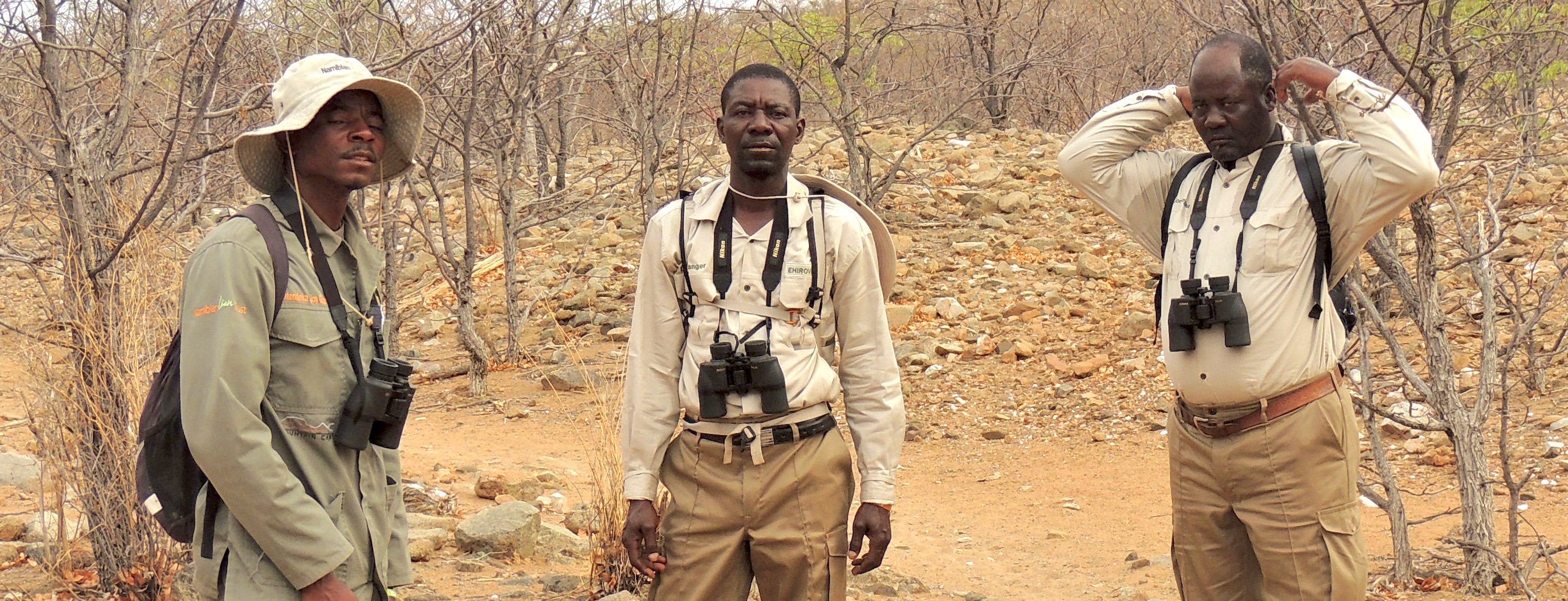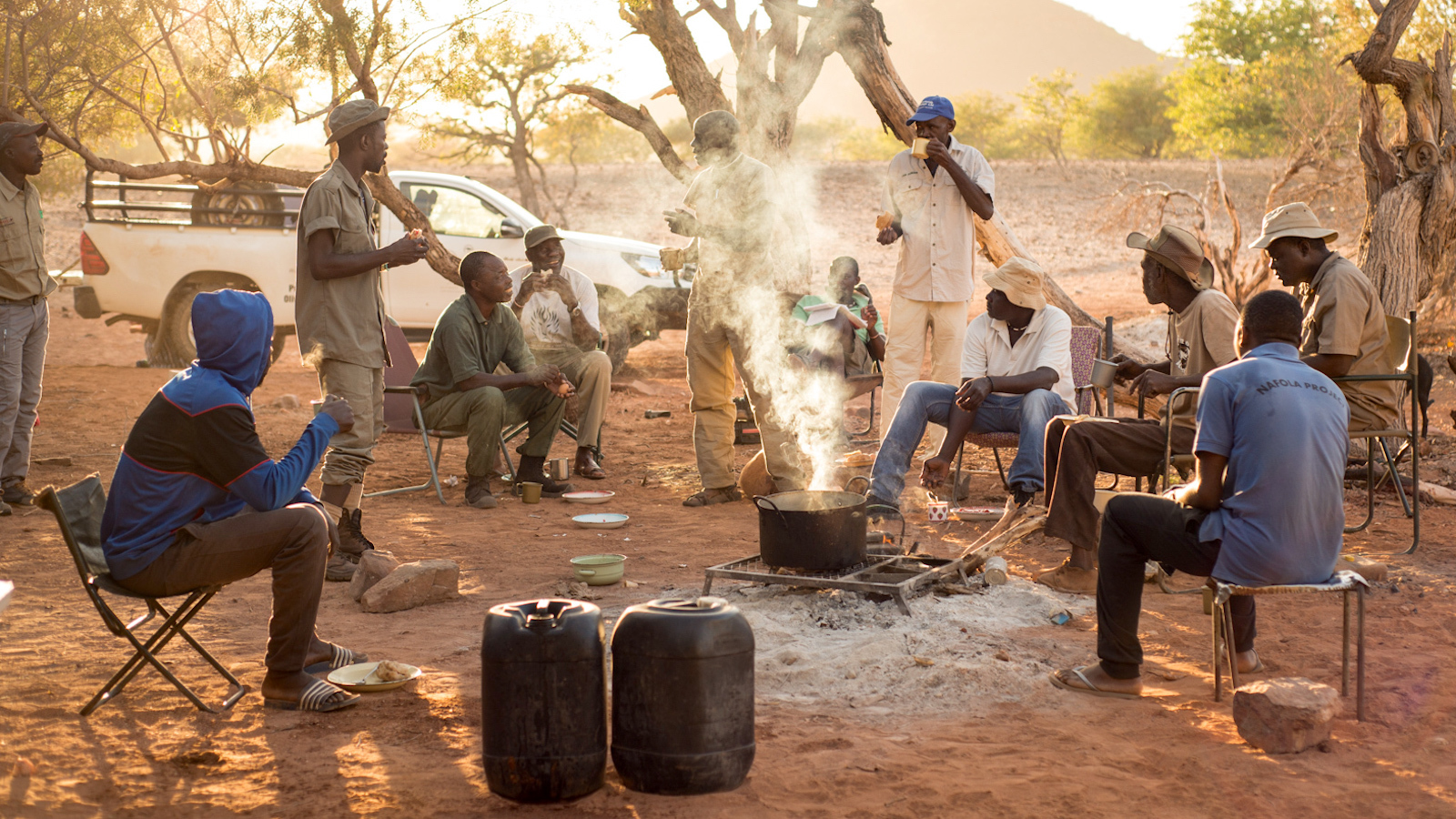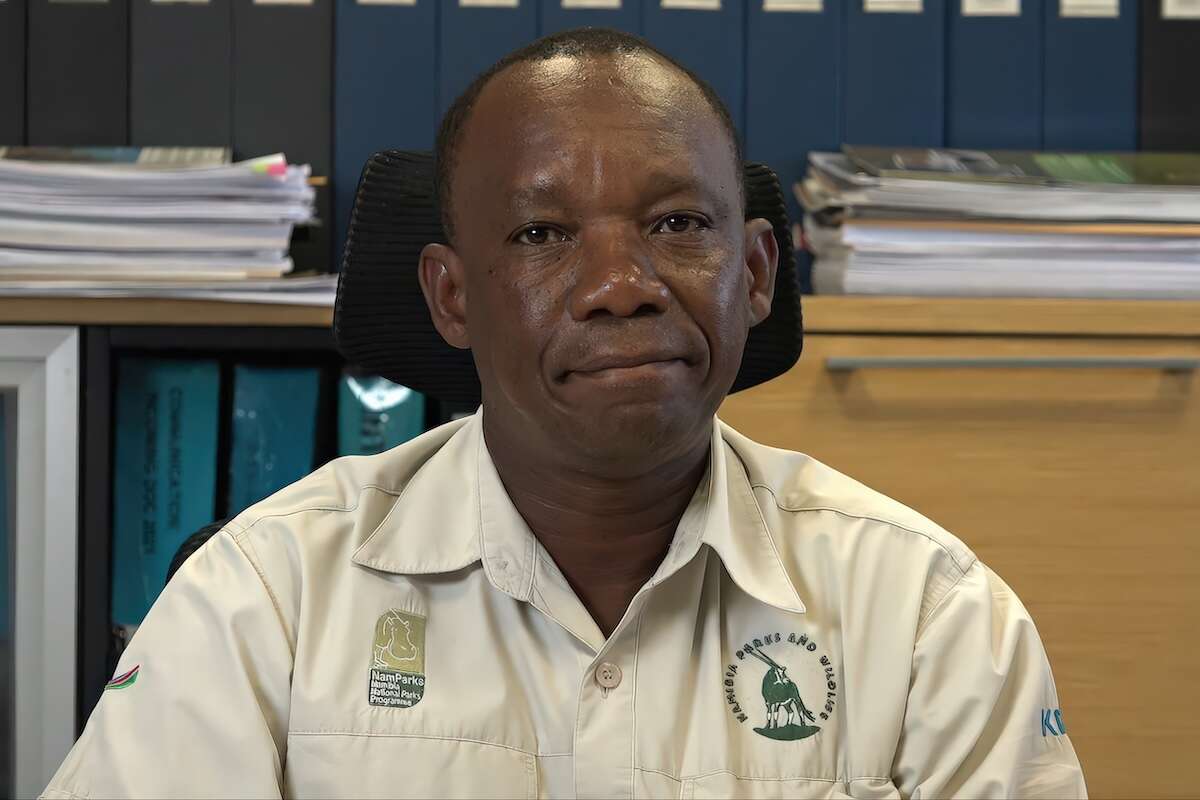
Seeing lions in a different light
Lion Rangers and community conservation
7th November 2022
Since the late 1990s, desert-adapted lions in north-western Namibia's Kunene Region have rebounded from a low of approximately 20 individuals to a high of about 180 in 2015. This dramatic recovery coincided with the growth of Namibia's communal conservancy system and consequent increase in lion prey populations.
The lions' range expansion and population increase meant that local farmers often paid the price for successful community conservation in the form of livestock losses. One recent survey estimated that the average household living in core lion-range areas lost N$ 37,000 worth of livestock to lions alone during the time when lion numbers reached their peak.
Namibia's communal conservancies – now numbering 86 across the country – are considered to be among the world's most highly-regarded examples of successful community-based natural resource management (CBNRM). Namibia's CBNRM programme grants people living on communal lands conditional ownership over the wildlife on those lands, which allows them to manage the wildlife and benefit economically from its presence. However, lions and other large and damage-causing wildlife have proven an awkward fit within the CBNRM system. Because lions are specially protected, the Namibian government makes the ultimate decisions on how lions are managed, which undermines the case for community ownership of this species. The community benefits associated with lions (e.g. through tourism) are generally too low to cover the high costs suffered by individual households.
Recognising these shortfalls, the Ministry of Environment, Forestry and Tourism (MEFT) and its NGO partners – Integrated Rural Development and Nature Conservation (IRDNC) and the Desert Lion Conservation Trust – activated the Lion Rangers programme in 2017. Russell Vinjevold, Dr. Philip Stander, and Dr. John Heydinger took the lead in working with core lion-range conservancies to identify, train, and equip local people as the first Lion Rangers. Their primary duties were monitoring lions, warning farmers of lion presence, and mitigating lion-related conflict within their conservancies.

In early 2018, the first group of 11 Lion Rangers representing the Anabeb, Puros and Sesfontein conservancies convened at Wêreldsend Environmental Centre to kick off the programme. The first training course focused on the rangers' roles and responsibilities and on responding to an ongoing lion conflict incident in nearby Anabeb Conservancy. Since that time, and with the support of the International Union for the Conservation of Nature (IUCN), the Community Conservation Fund of Namibia (CCFN) and Tourism Supporting Conservation Trust (TOSCO), the Lion Rangers programme has grown to include 49 rangers representing 11 conservancies in the Kunene Region, including those employed by TOSCO and the Namibian Lion Trust.
The key question is: how do these rangers address the challenges of lions within the CBNRM system? The most important aspect of their work is incorporating local perspectives into lion conservation and conflict management. Extensive social surveys revealed that livestock owners in Kunene consider lions to be fearsome, destructive and increasing in numbers.
Fearsome, destructive and increasing
Lions are considered fearsome because they pose a threat to people's safety and lives. According to one Anabeb Conservancy farmer, Lions are coming to the house. Even in the morning when you are coming out of the house you will see the tracks there, next to the fire… you are afraid, just to move around.
Another from Puros Conservancy said, Lions are very dangerous… We must be careful. We must be safe.
These feelings are part of a long history of lions attacking humans in Kunene. Stories of such attacks, though overwhelmingly representing a bygone era, still circulate freely and many farmers have personally experienced frightening lion encounters.
Lions are considered destructive because they can compromise farmer's livelihoods – a direct challenge to the foundation of CBNRM, which is meant to produce economic benefits alongside communal proprietorship of natural resources. Said one conservancy farmer, The problem with lions… they come and kill someone's cattle that they are living from.
Another, looking towards an increasingly empty kraal said, I am becoming poor because of lions.
In recent years there have been numerous well-documented cases of lions destroying entire herds of sheep and goats, usually within kraals. These incidents increase poverty levels in one of Namibia's poorest constituencies.
To those sympathetic to lion conservation efforts, it may be surprising that many Kunene farmers consider lion numbers to be increasing. Said one conservancy leader, In the past the cattle were sleeping in the field but now they cannot because the lion population is high
. This perception is consistently repeated. By contrast, the Namibian public are familiar with well-worn concerns stemming from activist organisations in the press and on social media that the desert-adapted lions are disappearing
or facing extinction.
How can these two perceptions – local farmers' concerns that lion numbers are increasing versus activist concerns that the lions may disappear – be squared? The reason is that these perceptions are working on different timeframes.

Social surveys indicate that farmers often compare lion numbers to those prior to the establishment of conservancies. Said one Torra Conservancy farmer, Before the conservancy, wild animals were killed. When the conservancy was established, they said the predators shouldn't be killed… Now, conservancies have come in and decided, ‘no, we won't kill wild animals anymore'… that is a problem.
Prior to independence, apartheid legislation confined communal farmers to a marginal existence beyond the care of the government. Government disinterest in local welfare forced farmers to take matters into their own hands. This led to high levels of wildlife destruction on communal lands, as many people struggled to survive the combination of racist policies and drought during the 1980s. During that period lions disappeared from the Kunene Region almost entirely. Since then, lion numbers have increased in response to increasing prey populations and better protection afforded by conservancies. Law-abiding farmers know that they cannot kill lions as before, as it is only permitted in response to direct threats to their lives or livelihoods.
In contrast, pages on social media strive to raise money for desert-adapted lion conservation, worrying that the desert[-adapted] lions are vanishing day by day
and that their existence is running out.
Such declines are likely considered relative to high numbers of desert-adapted lions reported during the mid-2010s, when the population was estimated to be as high as 180 individuals. However, no comprehensive population estimate of lions in north-western Namibia, west of Etosha, has ever been scientifically performed. Although it is the best available estimate, this figure is based on extrapolated data coming primarily from Palmwag Concession.


Population trends are thus relative to the baseline estimate you use, while the accuracy of any estimate is influenced by the methods used for counting and extrapolation. Based upon extensive monitoring by the Lion Rangers since 2018, as of early 2022, lion numbers in Kunene have declined since the mid-2010s, though they remain well above their minimums of the 1990s. More pertinently, the population appears secure and resilient to recent challenges stemming from drought and conflict with farmers.
This conclusion is primarily based upon a short-term assessment of the population, performed in mid-2021 by MEFT, the Lion Rangers and partnering organisations. During this assessment, spanning core lion-range in Kunene, as many individual lions as possible were identified and records were submitted to MEFT. Yet the resulting estimate was not indicative of a full count, so MEFT requested the first-ever comprehensive Kunene lion population survey, taking place during November and December 2022.
Based upon the existing Conservancy Game Guards concept, and adapting the success of Namibia's Rhino Rangers, the Lion Rangers are community conservationists who link farmers and their communities to research, policy, and management interventions. The upcoming lion population survey is being implemented applying ranger-centred methods. Drawing on the rangers' extensive experience in tracking and individually identifying lions, this population survey aims to identify every single lion over the age of two in the northwest, using a repeatable community-centred approach. In addition to providing the first science-based, transparent approach to estimating lion numbers in Kunene, the survey will build capacity among rangers as conservation and research leaders within their communities.
There is an increasing realisation across Africa that lion conservation needs to include local communities that live with lions. As the Lion Rangers take part in the population survey and become ever more familiar with individual lions, they can share this information with their communities. In doing so, lions may come to be seen less as simply fearsome, destructive and increasing, but rather as individuals within a well-understood population, known and managed primarily by local communities. This approach reinforces the underpinnings and goals of CBNRM by placing communities at the centre of lion conservation.
If you enjoyed this page, then you might also like:



For articles on similar topics, please click one of the following options:
For more great articles from Conservation Namibia see below...
Conservation Namibia brought to you by:
We use cookies to monitor site usage and to help improve it. See our Privacy Policy for details. By continuing to use the site, you acknowledge acceptance of our policy.









